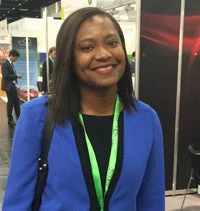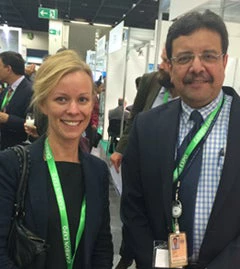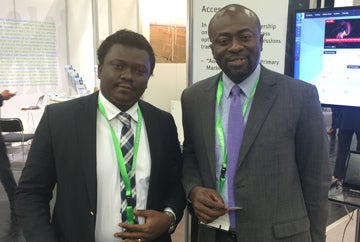I knew there was something different about Carbon Expo this year as I looked up during the opening ceremony and noticed the room was packed, with standing room only for late arrivals.
That is when I first asked myself: I know why I am here, but why are you here? I felt like a veteran carbon warrior among a sea of young fresh-faced carbon players.
I started coming to Carbon Expo in 2004, and this year, for the first time, there are plenty of people I don’t recognize. So today I took some time to ask people what they were doing here and why there seems to be a growing interest in carbon markets.
I first met up with Animesh Sourabh, who has been working for Carbon TradeXchange in London for two years. This was his first trip to Carbon Expo and he was pleased to finally meet people face-to-face who he had spoken with by phone for years. He wanted to know what makes Carbon Expo the flagship event for carbon markets. "I know why I am interested in carbon markets, but who are all the other stakeholders?" he asked. "I was curious to meet the ‘who’s who in the carbon sector'."

Ana Meyer of Green Resources is looking to promote her company’s reforestation projects in Mozambique, Uganda, and Tanzania. She is here to sell carbon credits and to get a feeling for where the market is going.
So where is the carbon market going? Well, the spotlight is certainly on domestic action. And while international climate negotiations may still be uncertain, everyone is talking about the need to put a price on carbon.
This was particularly important for Fabrice Le Saché, chairman and CEO of Ecosur Afrique. He has been coming to Carbon Expo for seven years and is looking for buyers of carbon credits – Ecosur has developed 40 projects in 17 countries. He likes that everyone is in one place, making networking easy.
 And Francois Kabemba (at right with Venan Mabiala Ma Mabiala), is here to find partners for a biogas program in the DRC. "In September, we are launching a cookstove POA, and we are looking for partners, investors, and buyers," he said. "The first phase is financed by UNDP and Climate Corporation in Austria, for 20,000 stoves, but we are hoping to expand to 360,000." The production is taking place in Kenya for now, but he is hoping to bring it over to the DRC. This type of south-south cooperation leads to technology transfer and jobs.
And Francois Kabemba (at right with Venan Mabiala Ma Mabiala), is here to find partners for a biogas program in the DRC. "In September, we are launching a cookstove POA, and we are looking for partners, investors, and buyers," he said. "The first phase is financed by UNDP and Climate Corporation in Austria, for 20,000 stoves, but we are hoping to expand to 360,000." The production is taking place in Kenya for now, but he is hoping to bring it over to the DRC. This type of south-south cooperation leads to technology transfer and jobs.
There is clearly a new generation of carbon warrior on the rise. Their interest coincides with the emergence of new domestic markets and bodes well as we all move climate action forward.


Join the Conversation